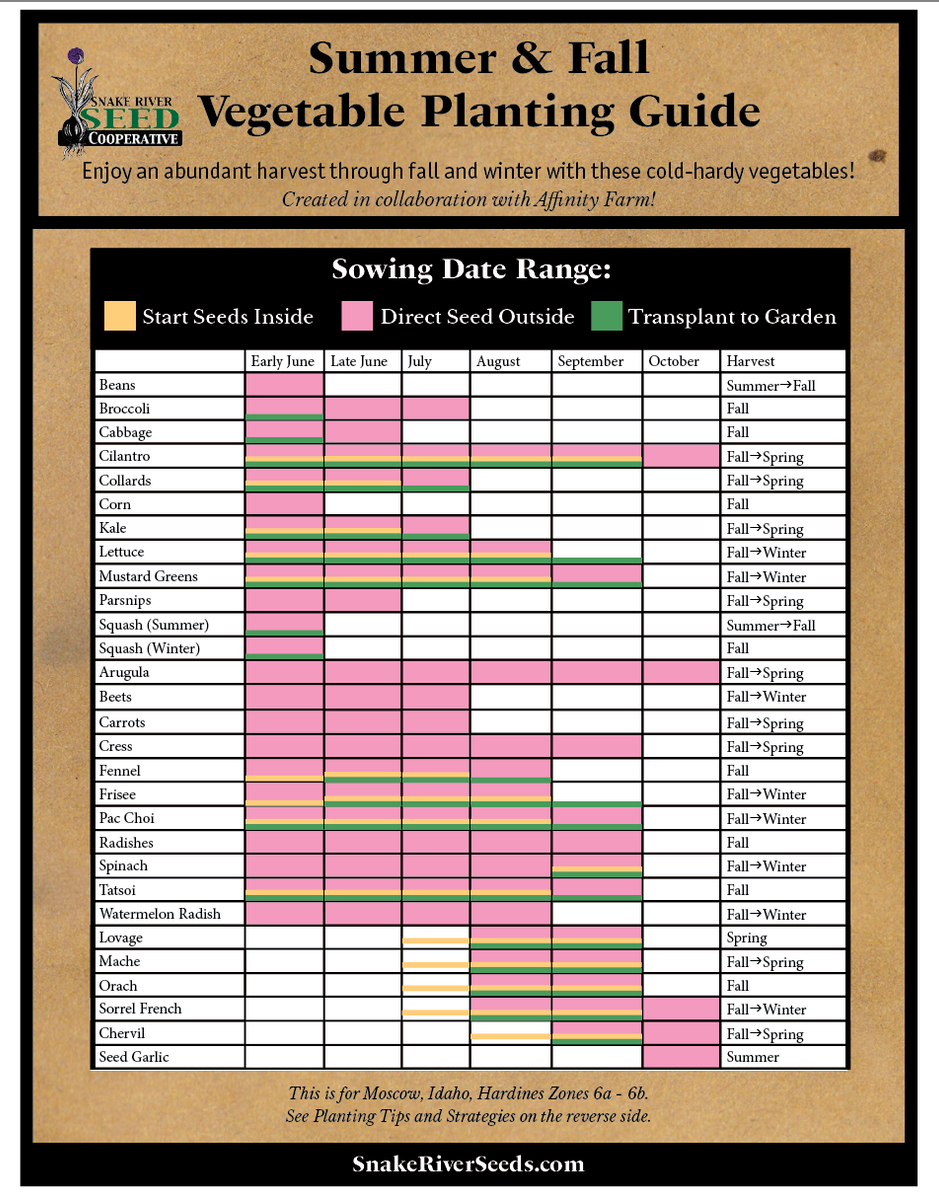Yes, you can grow radishes in the summer. Follow these seven season extension tips for a successful harvest.
Radishes are typically cool-weather crops, but summer cultivation is possible with the right techniques. Choose heat-tolerant varieties to withstand higher temperatures. Provide shade to protect from intense sunlight. Consistent watering is crucial to prevent the soil from drying out. Use mulch to retain soil moisture and regulate temperature.
Plant in well-drained soil to avoid root rot. Regularly check for pests and diseases to maintain plant health. These tips will help you grow radishes successfully during the summer months.

Credit: extension.umn.edu
Introduction To Summer Radishes
Radishes are a versatile and quick-growing crop. They are known for their crisp texture and peppery flavor. Growing radishes in the summer may seem challenging. But with the right techniques, it is achievable and rewarding. This guide will help you understand how to grow radishes in the summer.
Why Choose Radishes?
Radishes are easy to grow and mature quickly. This makes them ideal for gardeners of all skill levels.
- Fast-growing: Radishes can be harvested in just 3-4 weeks.
- Low maintenance: They require minimal care and attention.
- Space-efficient: Radishes can be grown in small spaces, even in containers.
- Nutritious: They are rich in vitamins and minerals, including Vitamin C and potassium.
Benefits Of Summer Planting
Planting radishes in the summer has its unique advantages.
- Extended growing season: You can enjoy fresh radishes beyond spring.
- Consistent supply: Continuous planting ensures a steady harvest.
- Pest management: Summer planting can help avoid common spring pests.
- Diverse varieties: Experiment with heat-tolerant radish varieties for best results.
With these benefits in mind, let’s explore the 7 season extension tips to grow radishes successfully in the summer.

Credit: snakeriverseeds.com
Ideal Climate Conditions
Growing radishes in summer can be tricky. Radishes prefer cooler climates. Understanding the ideal climate conditions is key. This helps you to successfully grow radishes in warmer months. Let’s explore the necessary climate conditions.
Temperature Requirements
Radishes thrive in temperatures between 50°F and 65°F. High temperatures cause radishes to bolt. This means they will flower and not produce good roots. A key tip is to plant radishes in shaded areas during summer. This keeps the soil cooler.
| Temperature | Effect on Radishes |
|---|---|
| Below 50°F | Slow growth |
| 50°F – 65°F | Optimal growth |
| Above 65°F | Bolting |
Humidity Considerations
Radishes need moderate humidity levels. Very high humidity can cause diseases. Low humidity can dry out the soil. Aim for a balance.
Here are some tips to maintain the right humidity:
- Water radishes regularly but avoid overwatering.
- Use mulch to retain soil moisture.
- Plant radishes in well-drained soil.
Maintaining ideal humidity ensures healthy radish growth. This leads to crisp and tasty radishes.
Selecting The Right Varieties
Choosing the right radish varieties is key for summer growth. Not all radishes can thrive in hot weather. Selecting the right ones ensures a bountiful harvest.
Heat-tolerant Varieties
Some radishes can handle the heat better than others. Here are some heat-tolerant varieties:
- Cherry Belle: Grows quickly and resists heat.
- French Breakfast: Has a mild flavor and loves warm weather.
- Icicle: Thrives in summer and has a unique shape.
Quick-maturing Options
Quick-maturing radishes are perfect for summer. They grow fast and beat the heat. Here are some quick-maturing options:
- Champion: Ready in just 25 days.
- White Hailstone: Matures in about 30 days.
- Rover: Takes only 21 days to harvest.
Planting the right varieties ensures success. Choose wisely for a great summer radish harvest.
Soil Preparation Tips
Growing radishes in the summer can be challenging. Proper soil preparation is key to success. Let’s explore essential tips for preparing the soil.
Soil Type And Ph
Radishes prefer well-drained, loamy soil. Heavy clay soils can hinder growth. Sandy soils are also not ideal. Aim for a soil pH between 6.0 and 7.0. You can test the soil pH using a home testing kit. Adjust the pH by adding lime to raise it or sulfur to lower it. Proper pH ensures nutrient availability for radish growth.
Nutrient Requirements
Radishes need balanced nutrients for healthy growth. Nitrogen promotes leafy growth, while phosphorus and potassium aid root development. Use a balanced fertilizer, such as a 10-10-10 mix. Apply compost or aged manure to enrich the soil. Avoid excessive nitrogen, as it can lead to poor root formation. Here’s a table for quick reference:
| Nutrient | Role | Source |
|---|---|---|
| Nitrogen | Leafy growth | Compost, manure |
| Phosphorus | Root development | Bone meal, rock phosphate |
| Potassium | Overall health | Wood ash, greensand |
- Test soil pH and adjust accordingly.
- Use balanced fertilizers for nutrient needs.
- Incorporate organic matter like compost.
These soil preparation tips help ensure radish growth in the summer. Follow them for a bountiful harvest.
Planting Techniques
Growing radishes in the summer can be a rewarding experience. The key to success lies in proper planting techniques. This section will cover essential tips for spacing, depth, and optimal watering practices.
Spacing And Depth
Proper spacing and depth are crucial for radish growth. Planting too close can lead to poor root development.
- Space seeds about 2 inches apart.
- Rows should be 12 inches apart.
- Plant seeds at a depth of 1/2 inch.
Use a ruler to measure the spacing. This ensures even growth and healthy plants.
Optimal Watering Practices
Radishes need consistent moisture. Watering them correctly is vital.
| Watering Stage | Frequency | Amount |
|---|---|---|
| Initial planting | Daily | Light |
| After germination | Every 2-3 days | Moderate |
| Established plants | Weekly | Deep |
Keep the soil moist but not waterlogged. Use mulch to retain moisture and reduce evaporation.
Following these planting techniques will help you grow healthy radishes in the summer. Happy gardening!

Credit: www.flickr.com
Pest And Disease Management
Growing radishes in the summer can be a rewarding experience. But pests and diseases can ruin your harvest. Proper management is essential to keep your radishes healthy.
Common Pests
Common pests that affect radishes include flea beetles, aphids, and root maggots.
- Flea Beetles: These tiny black beetles chew small holes in the leaves. Use row covers to protect your plants.
- Aphids: Small, green insects that suck sap from plants. Spray with water to remove them.
- Root Maggots: These larvae feed on radish roots, causing damage. Rotate your crops yearly to reduce their numbers.
Preventing Diseases
Radishes are prone to diseases like downy mildew, black rot, and clubroot.
| Disease | Symptoms | Prevention |
|---|---|---|
| Downy Mildew | Yellow spots on leaves | Ensure good air circulation |
| Black Rot | Dark lesions on leaves | Use disease-free seeds |
| Clubroot | Swollen roots | Maintain soil pH above 7.2 |
Proper management of pests and diseases ensures healthy radishes. Use these tips to keep your summer crop thriving.
Harvesting And Storage
Harvesting radishes at the right time is crucial for taste and texture. Proper storage keeps them fresh longer. This section covers both aspects to help you enjoy your summer radishes to the fullest.
Signs Of Readiness
Knowing when your radishes are ready to harvest is essential. Here are the key signs:
- Size: Radishes should be about 1 inch in diameter.
- Color: Look for vibrant red, pink, or white roots.
- Leaves: Leaves will be green and healthy-looking.
- Firmness: Radishes should feel firm to the touch.
Check these signs to harvest your radishes at their peak flavor.
Proper Storage Methods
Storing radishes correctly ensures they stay fresh and crisp. Use these methods:
- Refrigeration: Remove greens, place roots in a plastic bag, and store in the fridge.
- Water Storage: Place radishes in a bowl of water in the fridge to keep them hydrated.
- Root Cellar: For long-term storage, keep radishes in a cool, dark place with high humidity.
Follow these steps to keep your radishes fresh and delicious.
Here’s a quick reference table for storage times:
| Storage Method | Duration |
|---|---|
| Refrigeration | 1-2 weeks |
| Water Storage | 1 week |
| Root Cellar | 1-2 months |
Keep these durations in mind to enjoy your radishes at their best.
Expert Tips For Success
Radishes are a fantastic crop to grow in your garden. They are quick to mature and offer a crisp, spicy flavor. Growing radishes in the summer can be challenging. Extreme heat can stress the plants. But with some expert tips for success, you can extend the growing season.
Mulching For Moisture
Mulching is crucial for summer radish cultivation. It helps retain soil moisture and keeps the roots cool. Use organic mulch like straw or grass clippings. This will shield the soil from the sun. Spread a 2-inch layer around your plants. This reduces evaporation and keeps the soil moist.
Shade Solutions
Radishes can suffer from too much sun. Create shade to protect them from the intense heat. You can use shade cloths or plant them near taller crops. Shade cloths block out some sunlight, keeping the radishes cool. Tall plants like corn or tomatoes can offer natural shade. This allows the radishes to grow without getting scorched.
Follow these tips, and your radishes will thrive even in summer. Happy gardening!
Frequently Asked Questions
Can Radishes Grow In Hot Summer Months?
Yes, radishes can grow in summer with proper care. Use shade cloth to protect them from intense heat. Water regularly to keep the soil moist.
What Is The Best Soil For Summer Radishes?
Loamy, well-drained soil is best for summer radishes. Ensure the soil is rich in organic matter to retain moisture and nutrients.
How Often Should I Water Summer Radishes?
Water summer radishes every day to keep the soil consistently moist. Avoid overwatering, which can cause root rot.
Do Radishes Need Shade In Summer?
Yes, radishes need some shade in summer to prevent bolting. Use shade cloth or plant them near taller crops for natural shading.
Conclusion
Growing radishes in the summer is possible with the right techniques. Use shade cloth, mulch, and proper watering. Choose heat-tolerant varieties for better results. Try these tips to enjoy fresh radishes even in the hotter months. Happy gardening!
